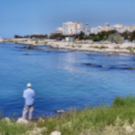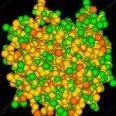USA Radioactive Wasp Nest Sparks Safety Concerns
-
Topics
-
-
Popular Contributors
-
-
Latest posts...
-
0
Accident Drunk Woman Ignores Pleas, Crashes After Argument
Picture courtesy of Khaosod. A 29-year-old woman has been taken into custody after a dramatic early morning crash in central Pattaya, following a heated argument with her friend who begged her not to drive while intoxicated. The incident took place at around 06.00 on Pattaya 3rd Road, in front of Pattaya City Hospital entrance. Pattaya City Police and emergency personnel responded swiftly to the scene after receiving reports of a collision involving multiple parked vehicles. On arrival, officers discovered a white MG3 saloon car with red licence plates, its front end damaged. According to reports, the car had raced across the road and ploughed into a stationary Honda Mobilio with Bangkok registration plates, which was parked along the roadside. The impact caused the Honda to crash into a second parked vehicle nearby, resulting in damage to all three cars. The driver of the MG3, identified only as Ms. A appeared visibly intoxicated at the scene. She was detained by officers and taken to undergo a blood alcohol test. Witnesses stated that shortly before the crash, Ms. A had a loud argument with a female friend inside the vehicle. The friend repeatedly warned her not to drive, citing her clearly impaired condition. However, Ms. A ignored the warnings and allegedly accelerated forcefully as she drove off, quickly losing control and crossing lanes. Police have confirmed that Ms. A was taken to a local station for formal alcohol testing. All affected parties have been advised to file official complaints so that legal proceedings can move forward in accordance with the law. The investigation is ongoing. Adapted by Asean Now from Khaosod 2025-08-02 -
21
Transport Pattaya Gridlock Sparks Urgent Transport Solutions
A lot would go wrong. You have not included the way many people drive. -
8
Thai - Cambodia Conflict Border Tensions: Hun Sen's Influence Remains Strong
Hun Sen is a former Khmer Rouge district commander that flipped sides once he knew the writting was on the wall and the Vietnamese were coming for him... he literally has blood on his hands and skeletons in the closet, and has not had to answer for his misdeeds. -
47
Report British Expat’s Roast Hunt in Thailand Goes Viral
Miserable people exist in all countries not just USA. My mother was one of these bottle half-empty people, always about what she did not have, how bad everything was, and how everything was better in the past. She has now passed away to go and harass Satan. -
17
Having "fun" is generally unhealthy.
You are a definite candidate for the phrase "Get a life" because you obviously don't have one right now -
7
Economy BoT May Slash Rates to Counter US Tariff Impact
Rather than negotiate a recyprocol trade deal... Go Thailand.
-
-
Popular in The Pub








Recommended Posts
Create an account or sign in to comment
You need to be a member in order to leave a comment
Create an account
Sign up for a new account in our community. It's easy!
Register a new accountSign in
Already have an account? Sign in here.
Sign In Now